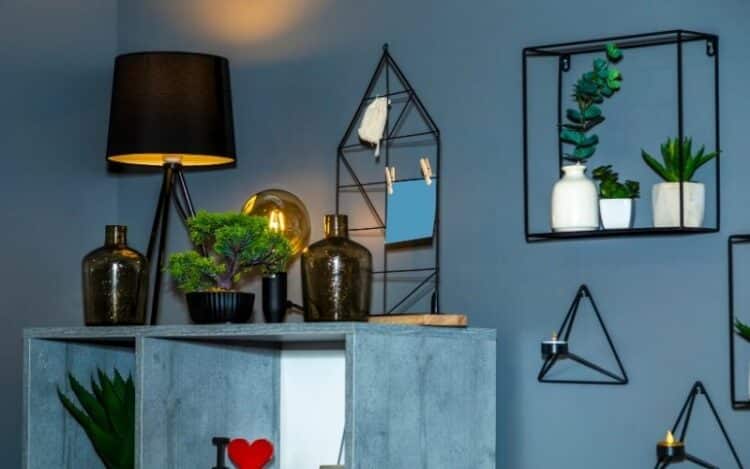Home decor in the United States has evolved into a dynamic and ever-changing landscape, reflecting not only the diverse cultural tapestry of the nation but also the shifting trends in interior design. The act of decorating one’s home has transcended mere aesthetics; it has become a means of self-expression, a reflection of individuality, and a way to create spaces that are both functional and aesthetically pleasing. As we step into the realm of home decor, it’s evident that American homes are increasingly characterized by a fusion of styles, with contemporary, traditional, and eclectic elements coexisting in harmony.
The preferences and inspirations that drive these trends are influenced by a plethora of sources, from social media platforms like Pinterest and Instagram to the desire for sustainability, and a growing appreciation for handcrafted, artisanal products. This journey into the world of American home decor explores the trends, inspirations, and factors that shape the way we adorn our living spaces in the 21st century, offering a glimpse into the vibrant, multifaceted world of interior design and home aesthetics in the United States.

Navigating the Evolving World of Home Decor Shopping in the US:
Eclectic Mix:
An eclectic mix in home decor involves combining a variety of styles, materials, and eras to create a space that’s uniquely your own. This can mean pairing a contemporary leather sofa with a vintage, weathered wooden coffee table or mixing art deco accents with industrial lighting. The beauty of eclectic design is that it allows you to showcase your personality and tell a story through your decor. To successfully achieve this style, it’s important to find a balance so that the different elements complement each other rather than clash. It’s about embracing diversity in design and being open to unexpected combinations.
Sustainability:
Sustainable home decor is on the rise as consumers become more eco-conscious. This trend involves selecting furniture and decor items made from sustainable materials, such as bamboo, reclaimed wood, or recycled glass. Additionally, it considers the environmental impact of the manufacturing process and transportation of goods. Choosing sustainably sourced and manufactured products not only helps reduce your carbon footprint but also supports companies that prioritize ethical and environmentally responsible practices.
Neutral Color Palettes:
Neutral color palettes, consisting of shades like whites, grays, and earthy tones, have gained popularity for their ability to create a calming and versatile backdrop in any space. These hues serve as a canvas upon which you can build your decor. The neutrality of these colors allows for easy incorporation of accent colors, textures, and patterns through accessories like throw pillows, rugs, and artwork. The result is a soothing and timeless ambiance that suits various design preferences and can be easily updated with changing trends.
Biophilic Design:
Biophilic design is all about bringing the outdoors in. Houseplants, such as those found at popular retailers like Walmart, add a touch of greenery and vitality to your interiors. By bringing the outside in, biophilic design helps reduce stress, increase productivity, and create a more harmonious living environment. Furthermore, the trend encourages the use of natural materials like stone and wood, fostering a connection with nature within the home.
Minimalism:
Minimalist design emphasizes simplicity, functionality, and a clutter-free aesthetic. In minimalist spaces, every item serves a purpose, and decor elements are intentionally chosen for their clean lines and understated elegance. The focus is on creating a sense of spaciousness and serenity. Minimalist design is ideal for those who prefer uncluttered and organized living spaces and appreciate a modern, sleek, and straightforward look.
Maximalism:
Maximalism is the opposite of minimalism, celebrating boldness, creativity, and abundance. In maximalist decor, there are no hard and fast rules, and the emphasis is on self-expression and eclecticism. It’s about layering patterns, colors, and textures, often in an opulent and luxurious manner. Maximalism encourages you to embrace your unique style and showcase a wide range of decor items, including artwork, textiles, and collectibles. The result is a visually stimulating and dynamic space that reflects your personality and interests.
Scandinavian Design:
Scandinavian design principles are rooted in simplicity, functionality, and coziness. This style often features light woods, neutral color palettes, and clean, uncluttered lines. It’s known for its warm and inviting atmosphere, making use of natural materials and emphasizing the importance of comfort and practicality. Scandinavian design creates a sense of hygge (a Danish word for comfort and contentment) and is well-suited for those who appreciate a cozy, relaxed, and unpretentious living environment with a touch of modern elegance.
Also Read: Luxury Shopping in America: Exploring High-End Retail Districts
Bottom line:
In the ever-evolving landscape of home decor trends in the United States, it is apparent that the search for the perfect design elements is more than just a quest for stylish aesthetics; it’s a journey of self-discovery and creative expression. Americans are redefining what it means to decorate their homes, and this journey is influenced by an array of sources and inspirations. The fusion of styles, the embrace of sustainability, the influence of social media, and the appreciation for artisanal craftsmanship are all contributing to this rich tapestry of interior design.
Ultimately, shopping for home decor is about creating living spaces that tell a unique story, that reflect the individuality of their occupants, and that offer a sense of comfort and style. As trends continue to evolve, one thing remains constant: the home is a canvas for personal expression, a sanctuary of comfort, and a reflection of the values and aesthetics that matter most to those who dwell within its walls. In the United States, the journey of shopping for home decor is a dynamic and deeply personal one, an exploration of creativity, taste, and the desire to turn houses into homes.










No Comments
Leave Comment